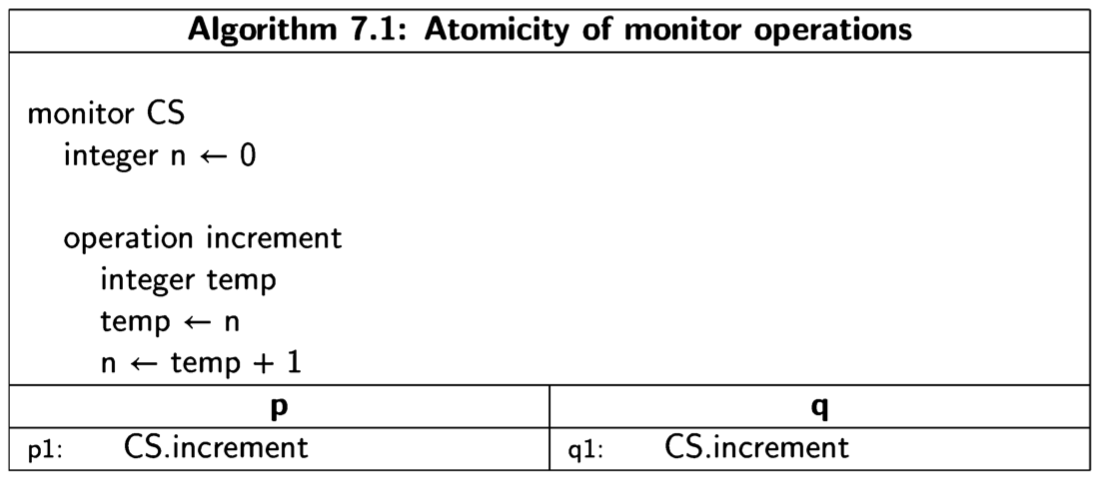Declaring and using monitors
In Section 2.5, we discussed the importance of atomic statements. Even the trivial Algorithm 2.4 showed that interleaving a pair of statements executed by each of two processes could lead to unexpected scenarios. The following algorithm shows the same two statements encapsulated within a monitor:

The monitor CS contains one variable n and one operation increment; two statements are contained within this operation, together with the declaration of the local variable. The variable n is not accessible outside the monitor. Two processes, p and q, each call the monitor operation CS.increment. Since by definition only one process at a time can execute a monitor operation, we are ensured mutual exclusion in access to the variable, so the only possible result of executing this algorithm is that n receives the value 2. The following diagram shows how one process is executing statements of a monitor operation while other processes wait outside:

This algorithm also solves the critical section problem, as can be seen by substituting an arbitrary critical section statement for the assignment statements. Compare this solution with the solution to the critical section problem using semaphores given in Section 6.3. The statements of the critical section are encapsulated in the monitor rather than replicated in each process. The synchronization is implicit and does not require the programmers to correctly place wait and signal statements.
The monitor is a static entity, not a dynamic process. It is just a set of operations
that sit there waiting for a process to invoke one of them. There is an implicit
lock on the door to the monitor, ensuring only one process is inside the monitor
at any time. A process must open the lock to enter the monitor; the lock is then
closed and remains closed until the process leaves the monitor.
As with semaphores, if there are several processes attempting to enter a monitor, only one of them will succeed. There is no explicit queue associated with the monitor entry, so Starvation is possible.
In our examples, we will declare single monitors, but in real programming languages, a monitor would be declared as a type or a class and you can allocate as many objects of the type as you need.